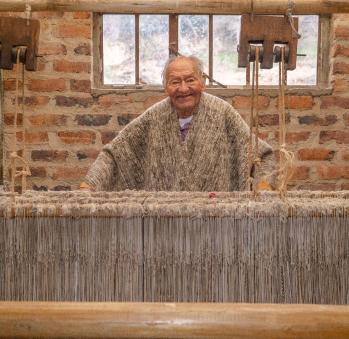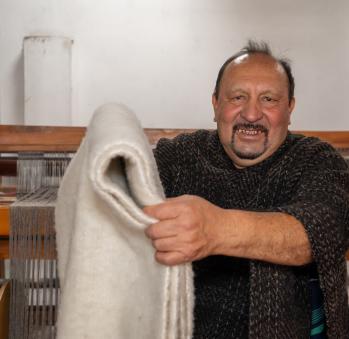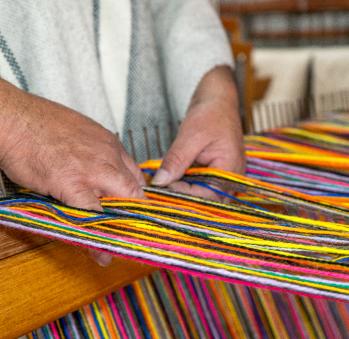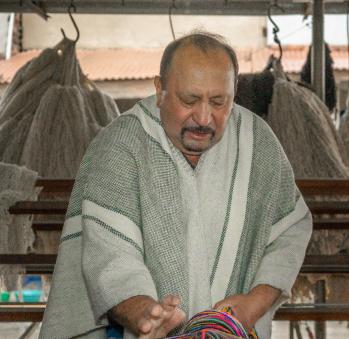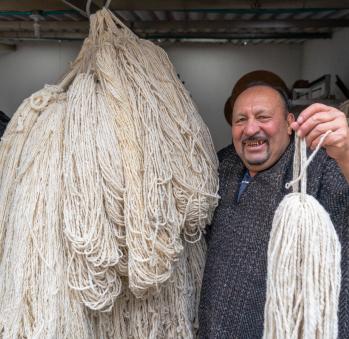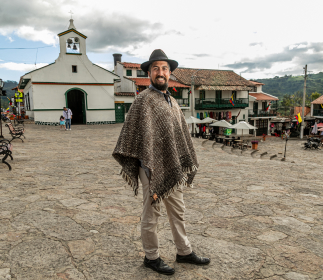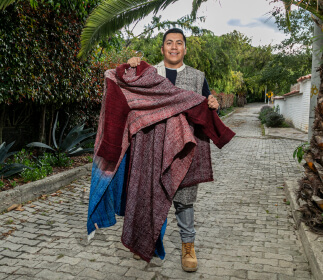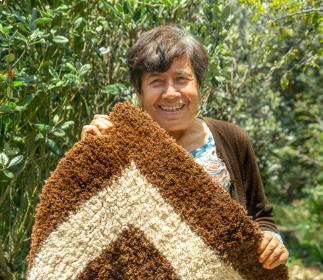Julio Ramón Cristancho Fagua
Workshop: Mi Viejo Telar
Craft: Tejeduría
Trail: Paipa-Iza and Paipa - Guacamayas Route
Location: Nobsa, Boyacá
“Son of the master Carlos Julio Cristancho, awarded with the Artisanal Mastery medal, this man is proud of being the one who continues the Cristancho Dinasty. Likewise, he bursts with joy at the knowledge that his nephew, Rafael, is who will follow him. He has numerous acknowledgements, among which he counts having made the largest ruana in the world —35 meters long and 20 meters wide, weighing more than 700 kilograms—, as well as having given Pope Francis one of his ruanas as a gift. In addition, he wove a canvas with iconography of souls in purgatory for the church. Many celebrities —politicians, military oficials, and a couple of presidents and candidates— wear his ruanas, among whom Nairo Quintana, Natalia París, and even the idol Vicente Fernández have taken a small part of Nobsa with them. Julio Ramón counts these achievements and celebrates them, but he does not let vanity embrace him: he perfectly remembers where he comes from and what it has meant to perpetuate the brand through tireless work.
“I learned to work this art when I was seven, before I had learned my vowels,” he says smiling. He recounts that he has spent more than 50 years in the trade, learning about weaving. He claims that he is still learning: “every day I learn more things. We will die and we will never stop learning.” He knows that his father, himself, and his nephew have more than 65 years of uninterrupted work with wool. To this must be added the tradition of their grandmothers on both their father and their mother’s sides: Alfonsa Fagua and María del Rosario Rincón, who were spinners and sheep shearers and also dedicated themselves to the household economy, which consisted in making espadrilles. His father, Carlos Julio, started working in the trade in 1955, for which he was awarded the Artisanal Mastery medal.
He speaks of Nobsa with generosity because he knows that it is the land that which has given him everything. It is his small country, as he calls it. And he feels like a king in his town, even though the saying “in the blacksmith’s house, stick hoe” applies to him. This is so because his father did not share the secrets behinds weaving with him: it was Doña Elpidia Negro who did. She taught him how to climb on the horizontal loom to step rhythmically and methodically on the warp while weaving. Only in this way, following her instructions to the letter, almost dancing atop the loom, could he become a weaver worthy of calling himself nobseño and heir to the Cristancho tradition.
He remembers his days as an apprentice and knows that what is essential is to keep his trade alive. That is why he knows that teaching is the key. If his house were not the place where he learned the most, for him becoming a teacher is fundamental. Because every new person conquered by the art of weaving is to him the guarantee of the survival of a trade that has warmed an entire country up. “The more I teach, the more blessed I am by God.” He, like his warp, will continue to make it so his threads always have a story to tell. “
Craft


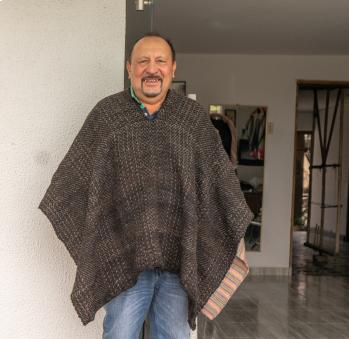









Artisans along the way
Artisans along the way
No puede copiar contenido de esta página









































